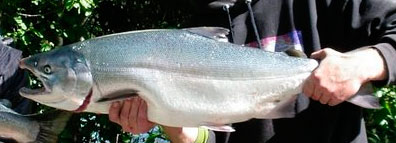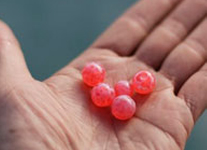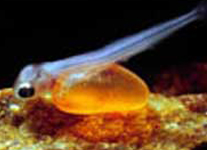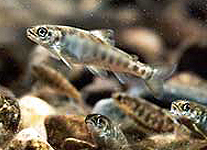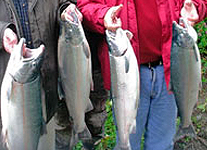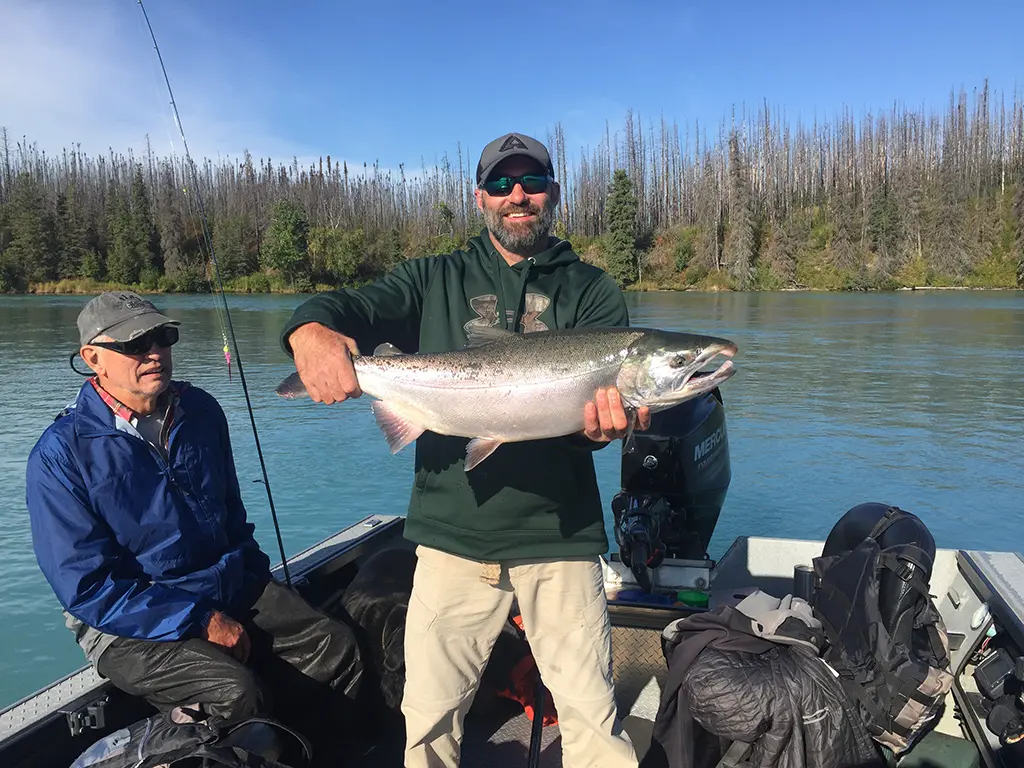Scientific Name:
Oncorhynchus kisutch, from the Greek roots onkos (hook), rynchos (nose) and kisutch, the common name in Siberia and Alaska.
Also known as:
Coho Salmon
Found:
Silver salmon spawn in coastal streams from Northern Japan to the Anadyr River in Siberia and from Monterey Bay in California and Point Hope in Alaska. This species can also be found in the ocean from Baja, California, to the Bering Sea in Alaska. Major U.S. spawning grounds are in Alaska, Washington, and Oregon.
Appearance:
Silver Salmon are bright silver with small black spots on their backs and on the upper part of their caudal fin. The average weight is 6-12 pounds. The flesh of the silver salmon is light pink and has a very delicate flavor. A very difficult salmon to keep fresh because of its feeding habits. The flesh tends to soften very quickly unless dressed immediately after being caught.
Habitat:
Silver salmon utilize freshwater, nearshore and offshore environments during its lifecycles. Silver salmon spawn in the same environment as King salmon; however, Silvers prefer lower stream velocity, shallower water, and smaller gravel. Most Silver fry stay in the stream for over a year feeding on aquatic insects, zooplankton and small fish.
Adequate stream cover is important to fry survival, as is high dissolved oxygen levels. Once reaching the estuaries, Silver salmon fall prey to a number of other species and may be impacted by human changes, such as shoreline development, residential drainage and the filling of marine wetlands.



